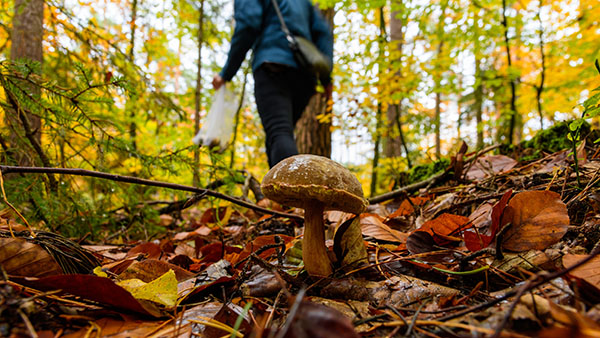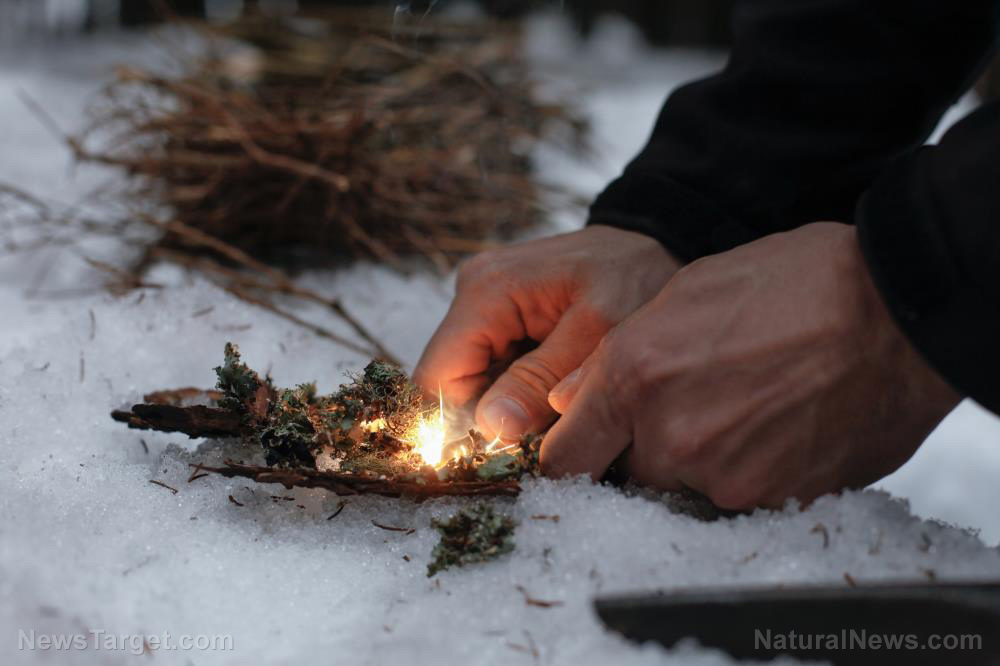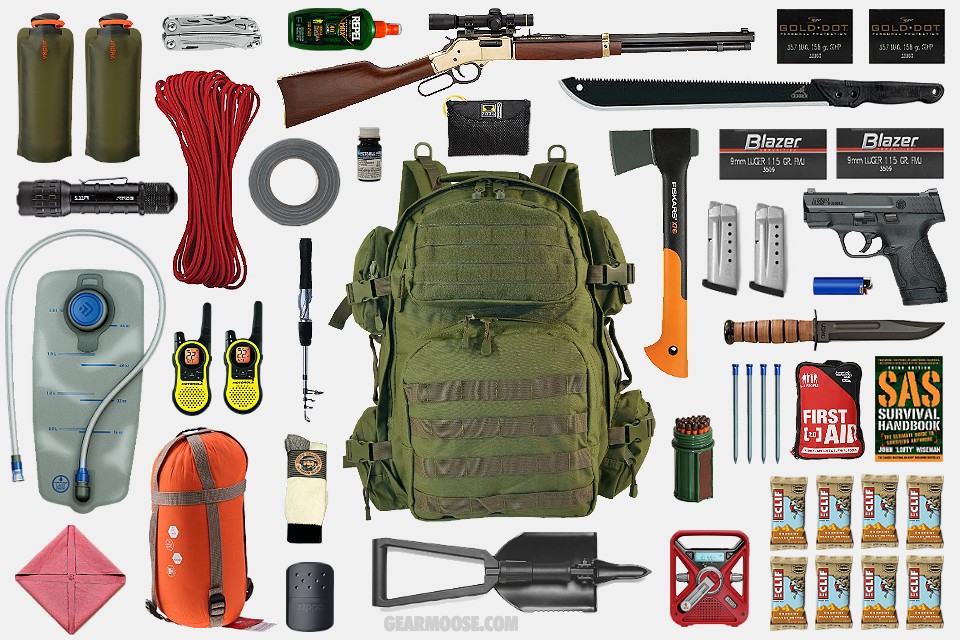
It may not seem like it, but knot tying is an important survival skill, just like fire-starting or hunting.
You will need to use certain survival knots if you spend a lot of time outdoors or in emergency situations. Knots can be used to secure shelters, tie-down survival gear and create traps for hunting.
A well-tied knot can also make the difference between a secure shelter and a collapsing tent when it's windy.
Here are the top 10 survival knots you should learn right away. (h/t to TruePrepper.com)
The importance of learning survival knots
Once you learn how to tie survival knots, practice regularly so you have a useful skill that you can rely on when disaster strikes.
Using the right kind of cordage, you can find a knot that suits your survival needs, whether that's setting up your tent or securing gear to your camping bag. You can also use survival knots for fishing, sewing, suturing, weaving and other survival skills.
You should also stock up on different kinds of cordage, such as:
Bungee cord
Bungee cord, also called shock cord, is an elastic type of "rope' made up of one or more elastic strands (the core) and an outer sheath made of propylene or woven cotton.
Bungee cords are great for lashing things together, but are not a good choice as your primary rope. This kind of rope is too stretchy, you can’t properly unravel it to use the separate cords and they rot rather quickly in the elements.
Most bungee cords are short, with the longest often only three feet long at most.
Twisted rope (laid rope)
Twisted rope looks like a spiral and it’s usually made of three strands (usually polypropylene wire) twisted together, hence the name.
While twisted rope isn't the strongest nor the best rope design, it has its uses: It is impervious to water and it also sinks, unlike other types of rope. Twisted rope is also cheap.
However, it isn't a good choice for a survival rope because it rots quickly and isn’t agile.
Parachute cord (paracord)
Parachute cord or paracord is popular among preppers for a reason. It is the best survival rope to include in your prepping or survival bag.
Paracord can be used in various scenarios and it is made of lightweight nylon. It has a strong inner core and a tear-resistant sheath.
Paracord is strong and very light, so bring some if you need to carry lots of gear with you. It also dries quickly and doesn’t rot or develop mildew when wet.
Keep in mind that certain knots work best for certain scenarios, as detailed below.
Alpine butterfly loop
The alpine butterfly loop is used to make a fixed loop in the middle of any rope. Use this knot to anchor your rope mid-line.
It can be used for different climbing and shelter applications.
The alpine butterfly loop is great for:
- Anchoring shelter lines
- Rescue harness loops
- Gear attachment points
The alpine butterfly loop is an easy knot to learn, and you can tie it fast once you learn it. You will probably use this survival knot for a variety of different scenarios.
Bowline knot
The bowline knot is a versatile non-slip knot for the end of your rope. Use this knot to put an attachment point on the end of a rope that you can still easily pop loose as needed.
The bowline knot is ideal for:
- Gear attachment loops
- Pulley loops
- Securing to poles
The bowline knot is not complicated, and you can quickly tie and disassemble it.
Clove hitch
The clove hitch can also be used to attach a rope to a pole. This lets you tighten a rope to anything cylindrical as you continue working. (Related: 24 Important homesteading skills to learn before SHTF.)
The clove hitch is ideal for:
- An animal tie-down (e.g., a leash for a pet)
- A running tripwire
- A shelter line
Once you learn the clove hitch, practice and learn its different applications.
Double fisherman's knot
The double fisherman’s knot can be used to strongly and securely join two rope ends together. Use this knot to lengthen rope, repair rope, or tie fishing line.
The double fisherman’s knot is ideal for:
- Creating a long rope from two shorter ropes
- Extending fishing line
- Repairing fishing nets
Learn the double fisherman’s knot so you can make longer cordage if you are in a survival situation.
Figure eight knot
The figure eight knot is a versatile knot that is a secure non-slip loop. Use this knot to create anchors or stoppers for other slip knots.
The figure eight knot is ideal for:
- Attaching gear or carabiners to your bag
- Making a rescue harness
- Pairing with other knots
The figure eight knot is a common knot that is important for both survival and everyday use.
Lashing knot
The lashing knot can be used to attach several poles, sticks, or other objects in a row. Use this knot to create a tripod or securely join large branches for other applications, like building a shelter.
This makes it ideal for:
- Constructing log rafts
- Creating a tripod shelter
- Making a field stretcher
While the lashing knot is easy to learn, it can take a while to tie depending on how large you need to make it.
This very survival-specific knot is ideal if you are also learning bushcraft skills.
Rolling hitch
The rolling hitch is ideal for attaching a rope to a pole or another length of rope and securing it in place.
Use the rolling hitch to attach ropes to anchor points for climbing, or to attach ropes to anything cylindrical.
The rolling hitch is ideal for:
- Climbing
- Making bucket handles
- Tying tarp shelters to poles
The rolling hitch isn't as common as the other knots in this list, and they are more often used in the climbing community.
Learn the rolling hitch so you have options when building shelters, carrying gear or climbing.
Trucker's hitch
The trucker’s hitch can be used to apply a significant amount of tension to a line with simple adjustments. The knot uses a blend of loops and half-hitches to get a mechanical advantage against a heavy load.
The trucker’s hitch is ideal for:
- Clotheslines
- Hoisting supplies up a tree
- Shelter lines
- Tying loads down tightly
The trucker’s hitch is a relatively difficult knot to tie if you don't practice it, but once you master this knot it is easy to disassemble and is rather strong.
Square knot
The square knot is another knot that lets you join two ropes together, and it holds well even under tension. It is the most common knot on this list.
The square knot is easy to learn and very versatile.
The square knot is ideal for:
- Attaching gear
- Splicing rope
- Tying loops
The square knot is something that even non-preppers are already familiar with and you can get a lot done with just this knot.
Zeppelin bend
The zeppelin bend is a survival knot that can also be used to securely and strongly join two rope ends together.
Rescue climbers use the zeppelin bend when they need a knot that is strong and reliable.
The zeppelin bend is ideal for:
- Lengthening rope
- Making a rescue harness
Beginners can easily learn the zeppelin bend and you can use it for different survival situations. If you need a reliable connection between two ropes, start practicing the zeppelin bend.
Learn these useful survival knots so you can secure gear to your bag or build a shelter after SHTF.
Go to Survival.news to learn more about other useful survival skills like knot tying.
Watch the video below to learn how to tie the trucker's hitch knot.
This video is from the Daily Videos channel on Brighteon.com.
More related stories:
UHMWPE braided cord: An amazing survival tool when SHTF.
Odd items that can be life-savers following an SHTF event.
6 Types of rope and why you need them for survival.
Sources include:
Please contact us for more information.




















